15 Trendy Types Of Bangs to Elevate Your Hairstyle
Bangs are more than just a haircut they’re a statement. From soft and romantic to bold and edgy, the Types Of Bangs you choose can completely transform your face shape, enhance your features, and even change your overall style vibe. Whether you’re looking for a low-maintenance style or a high-fashion statement, there’s a bang style for every hair type, length, and personality.
In this guide, we’ll explore 15 Types Of Bangs that are trending in 2025, explain how they work with different face shapes, and share tips on how to style and maintain them so you can rock your new look with confidence.
Curtain Bangs
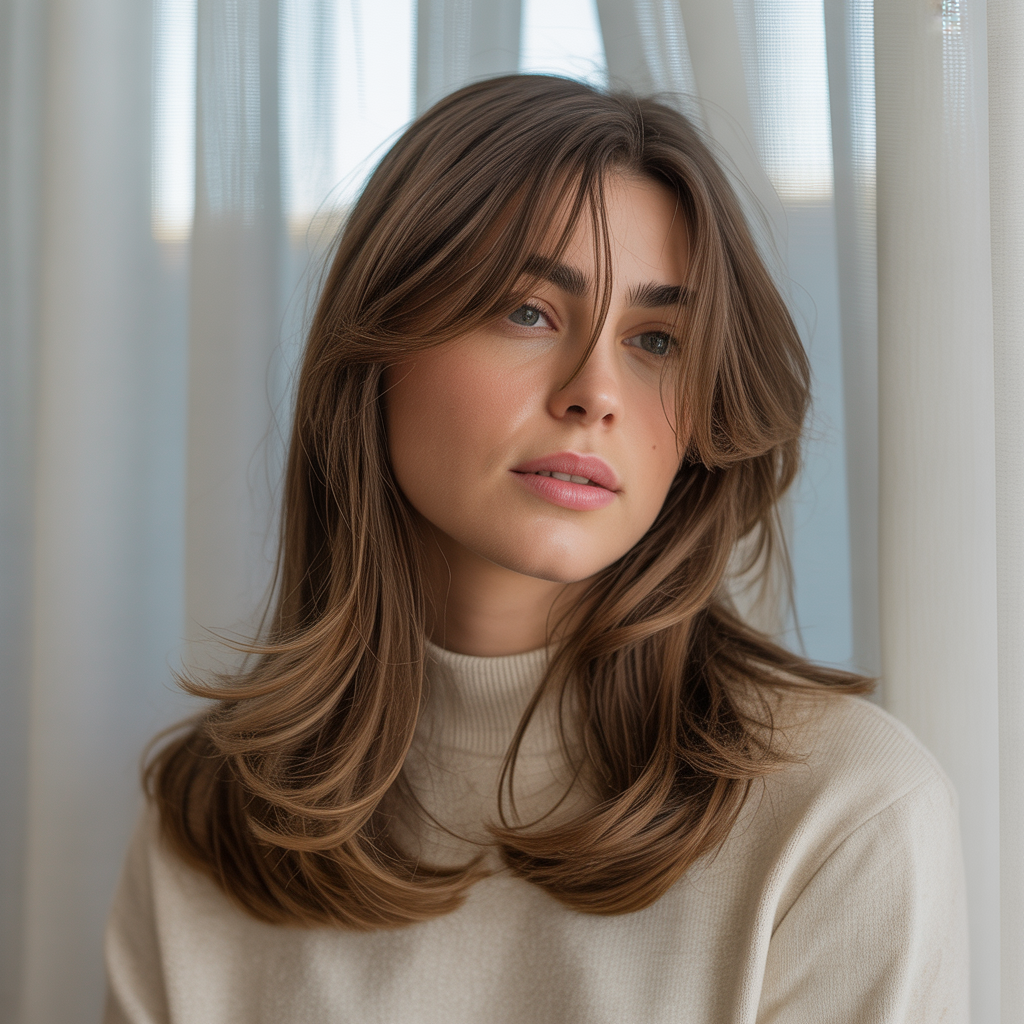
Curtain bangs are a timeless style that part in the middle (or slightly off-center) and frame your face on both sides like drapes. They’re versatile, soft, and flattering for almost any face shape. This type of bang works beautifully with long hair, short bobs, or layered cuts. Plus, they grow out seamlessly, making them perfect if you’re not ready for a dramatic, high-maintenance fringe.
Styling tip: Use a round brush to flip the ends slightly away from your face for a soft, feathered look.
Wispy Bangs
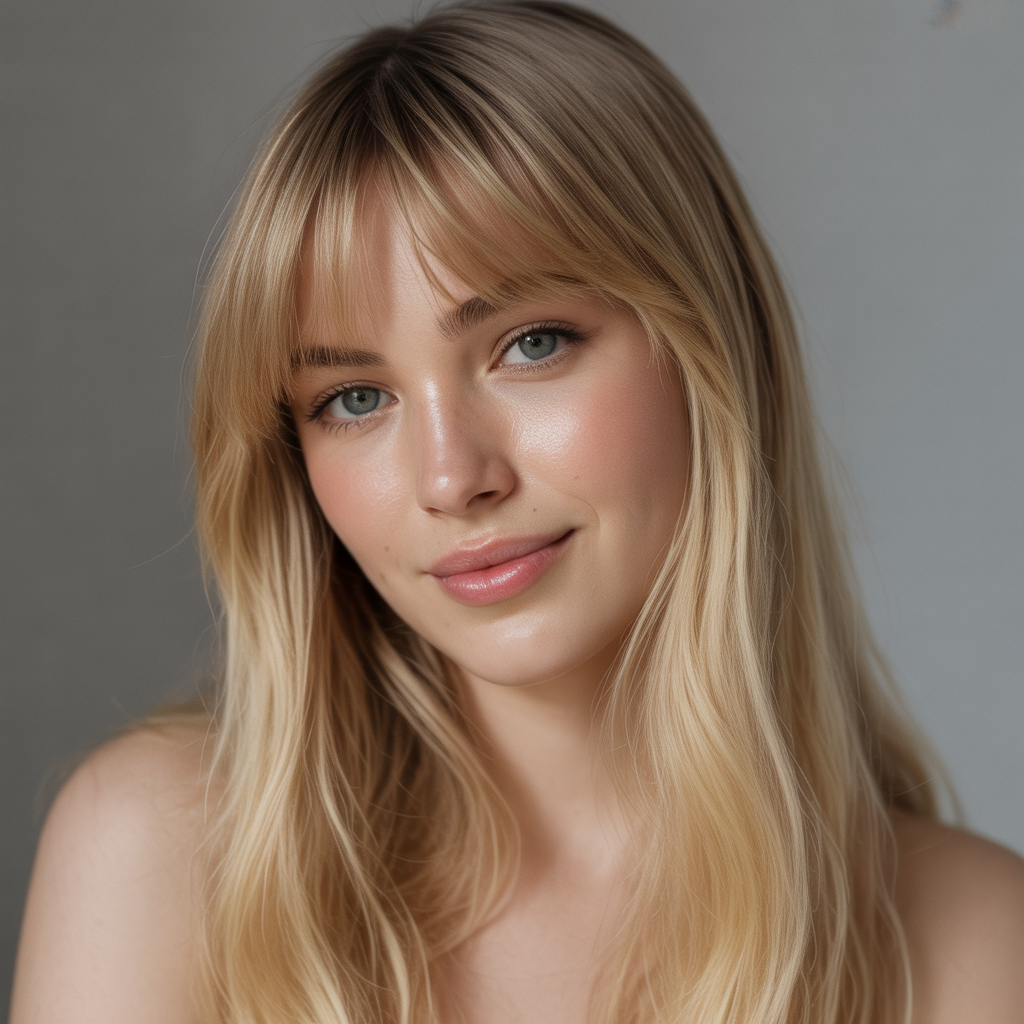
Wispy bangs are light, airy, and slightly see-through, perfect for adding a touch of softness without committing to a full, blunt fringe. They’re ideal for fine hair, as the light layering creates the illusion of more texture without weighing hair down.
Styling tip: Keep them slightly longer and use a lightweight hairspray to maintain a natural movement.
Blunt Bangs

Blunt bangs make a bold fashion statement. Cut straight across the forehead, they create a sharp, edgy look that pairs well with sleek bobs or long, straight styles. They work best for people with thicker hair, as fine hair may not achieve the same dramatic density.
Styling tip: Keep them freshly trimmed every 3–4 weeks to maintain the crisp, straight edge.
Side-Swept Bangs

Side-swept bangs are one of the most universally flattering types of bangs. They gently sweep across the forehead and blend into the rest of the hair, creating a soft, romantic look. This style works with straight, wavy, or curly hair.
Styling tip: Use a flat iron to curve the bangs slightly inward for a polished finish.
Choppy Bangs

Choppy bangs are all about texture and movement. The uneven ends give them a playful, edgy vibe that works well for modern, carefree hairstyles. They look fantastic on layered cuts and pair beautifully with messy waves.
Styling tip: Apply a bit of texturizing spray to emphasize the uneven layers.
Baby Bangs
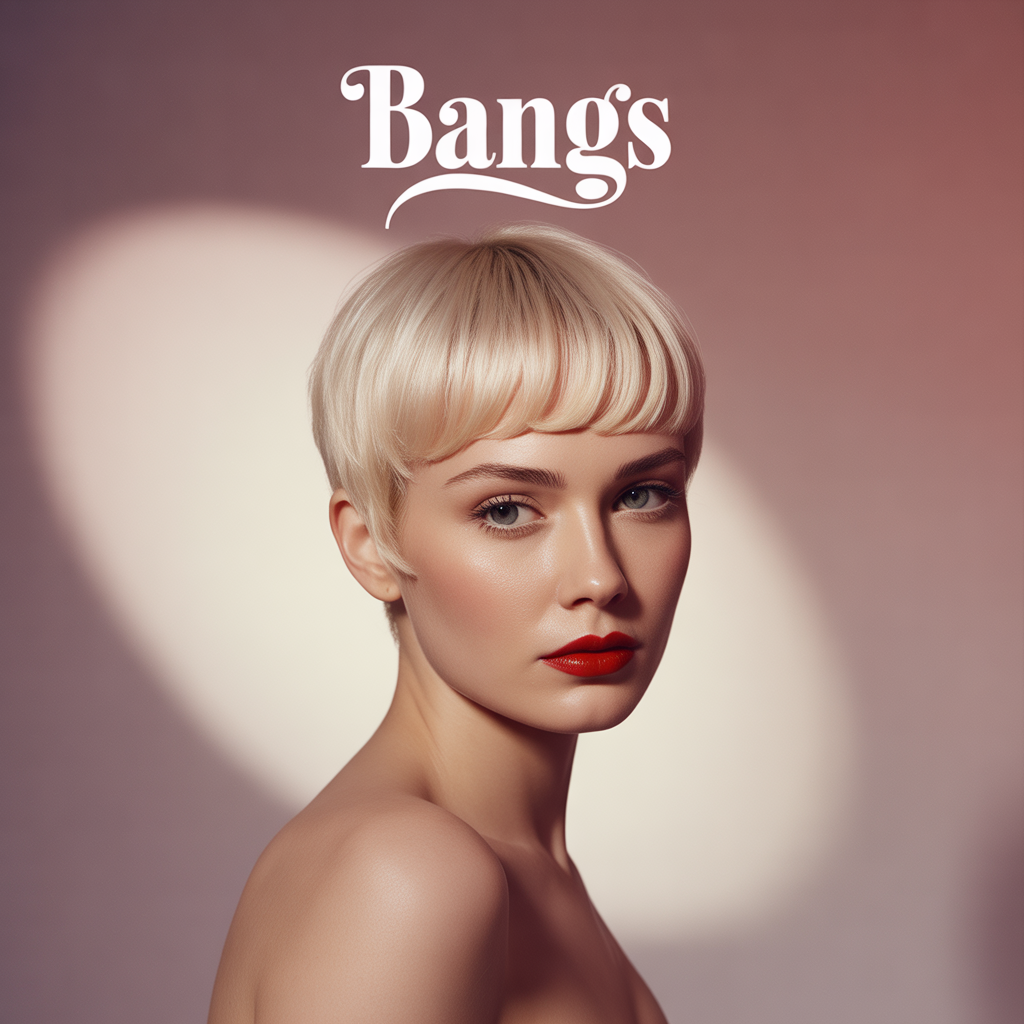
Baby bangs (or micro bangs) are cut significantly shorter than traditional styles, usually above the eyebrows. They’re bold, artsy, and perfect for those who want a stand-out look. While they’re not for everyone, they can dramatically highlight your eyes and brows.
Styling tip: Keep them styled sleek for a retro vibe or slightly tousled for a modern twist.
Feathered Bangs
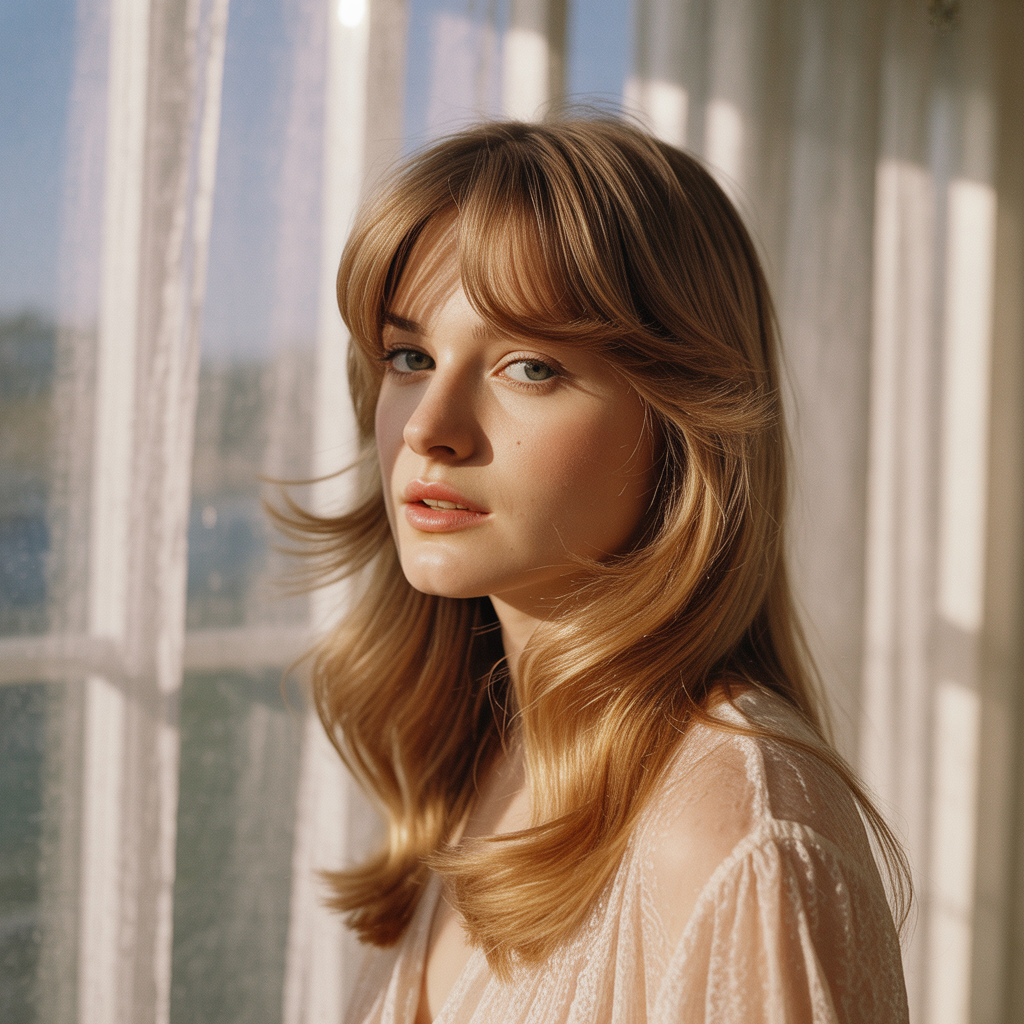
Feathered bangs are soft, layered, and light, giving a ‘70s-inspired flow to your hair. They blend effortlessly with layered haircuts and look especially great on medium to long lengths.
Styling tip: Blow dry with a round brush and finish with a light serum for shine.
Layered Bangs
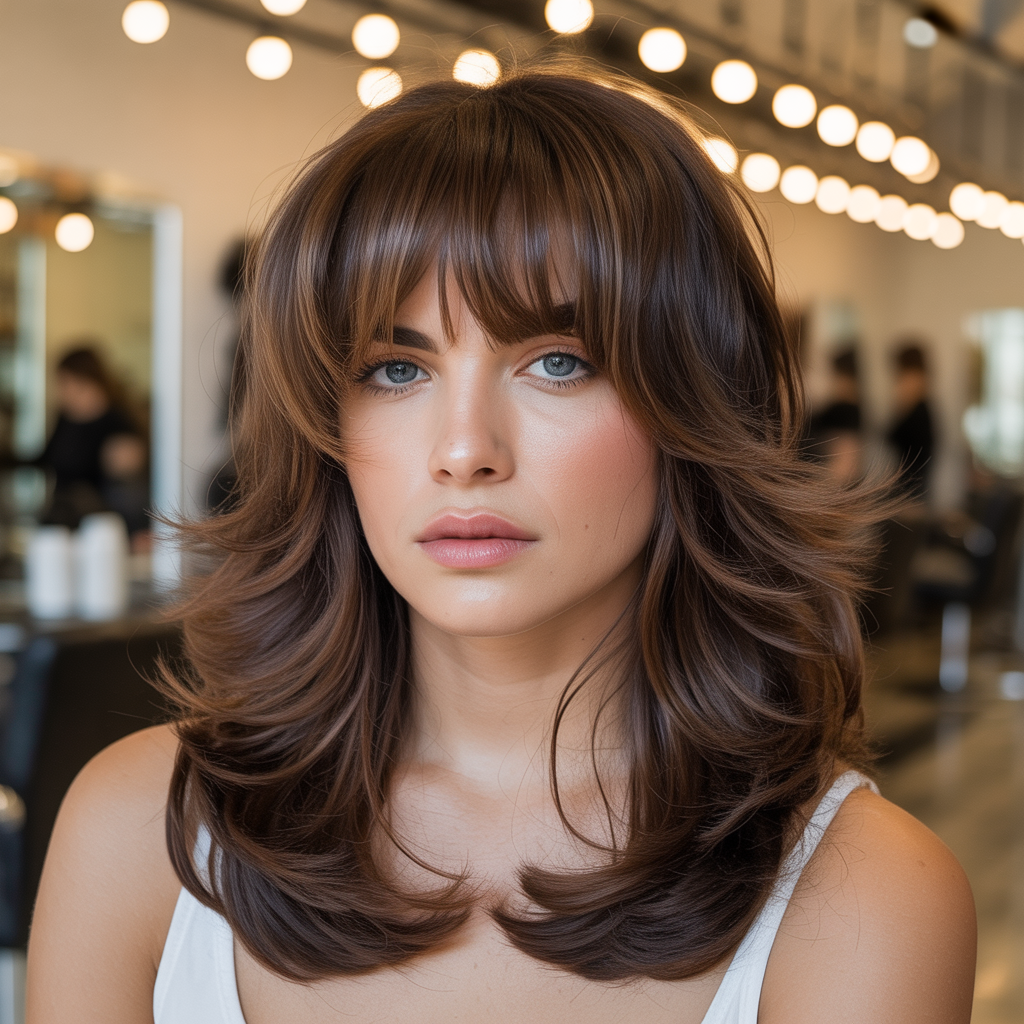
Layered bangs add depth and dimension, making them ideal for thick hair. The gradual layers help the bangs blend with the rest of the cut while maintaining face-framing effects.
Styling tip: Pair with layered haircuts for a seamless transition between bangs and length.
Curly Bangs
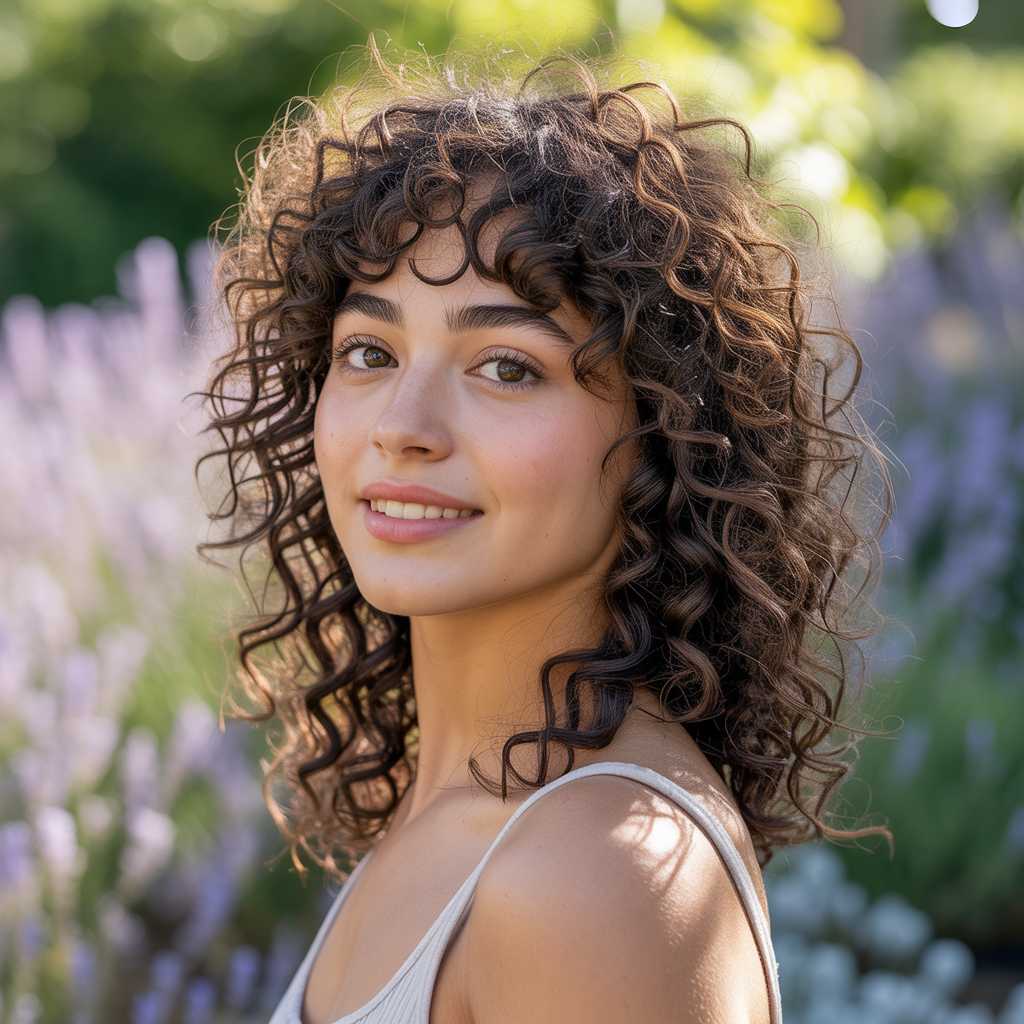
Curly bangs embrace natural texture instead of fighting it. They’re charming, unique, and add a playful bounce to your style. Perfect for those with naturally curly or coily hair, they frame the face beautifully without needing constant straightening.
Styling tip: Use a curl cream or gel to define and reduce frizz.
Textured Bangs

Textured bangs combine light layering and slight unevenness to create a relaxed, lived-in style. They work with both straight and wavy hair, adding effortless chic to casual hairstyles.
Styling tip: Use a sea salt spray for a beachy, undone effect.
Long Bangs
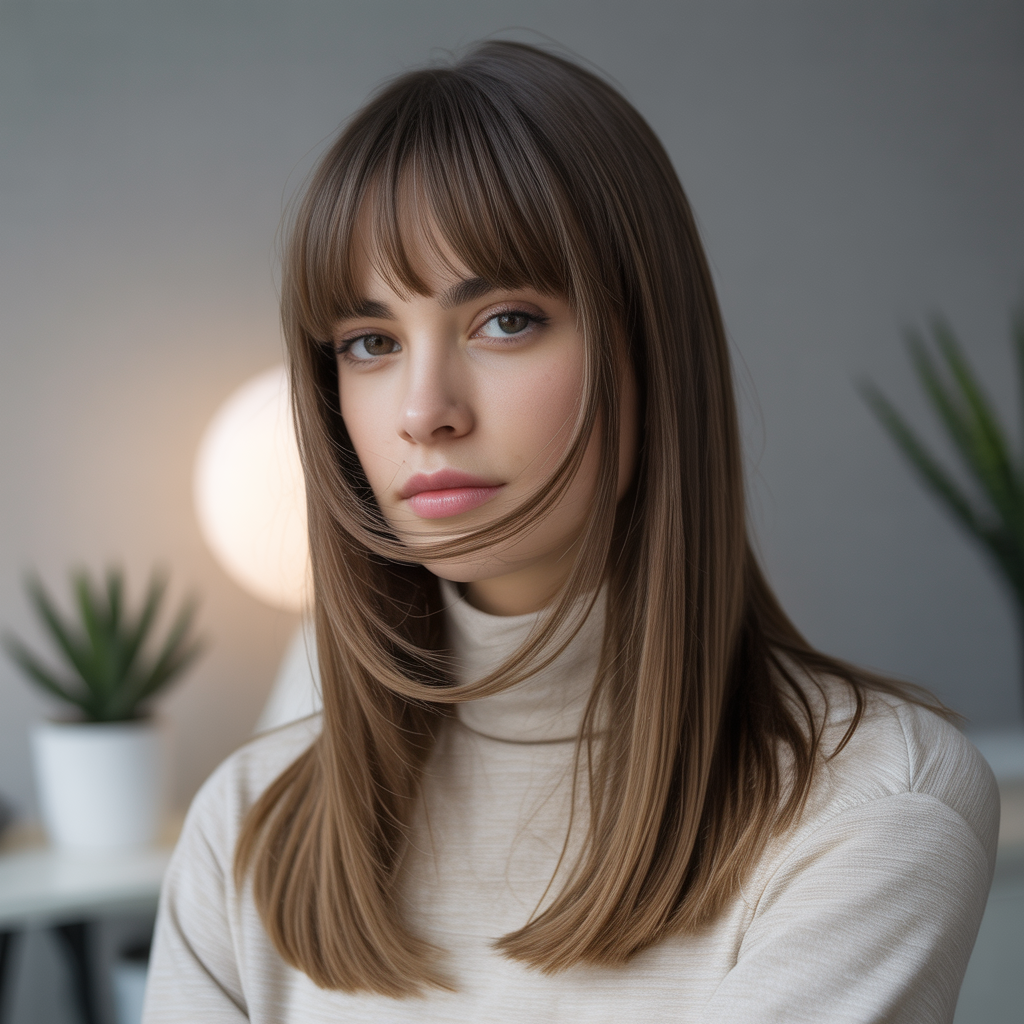
Long bangs (sometimes called grown-out bangs) extend past the eyebrows and blend into the cheekbones or jawline. They’re versatile — you can part them down the middle, sweep them to the side, or tuck them behind your ears.
Styling tip: Style with a blow dryer and round brush for smooth, face-framing results.
Bardot Bangs
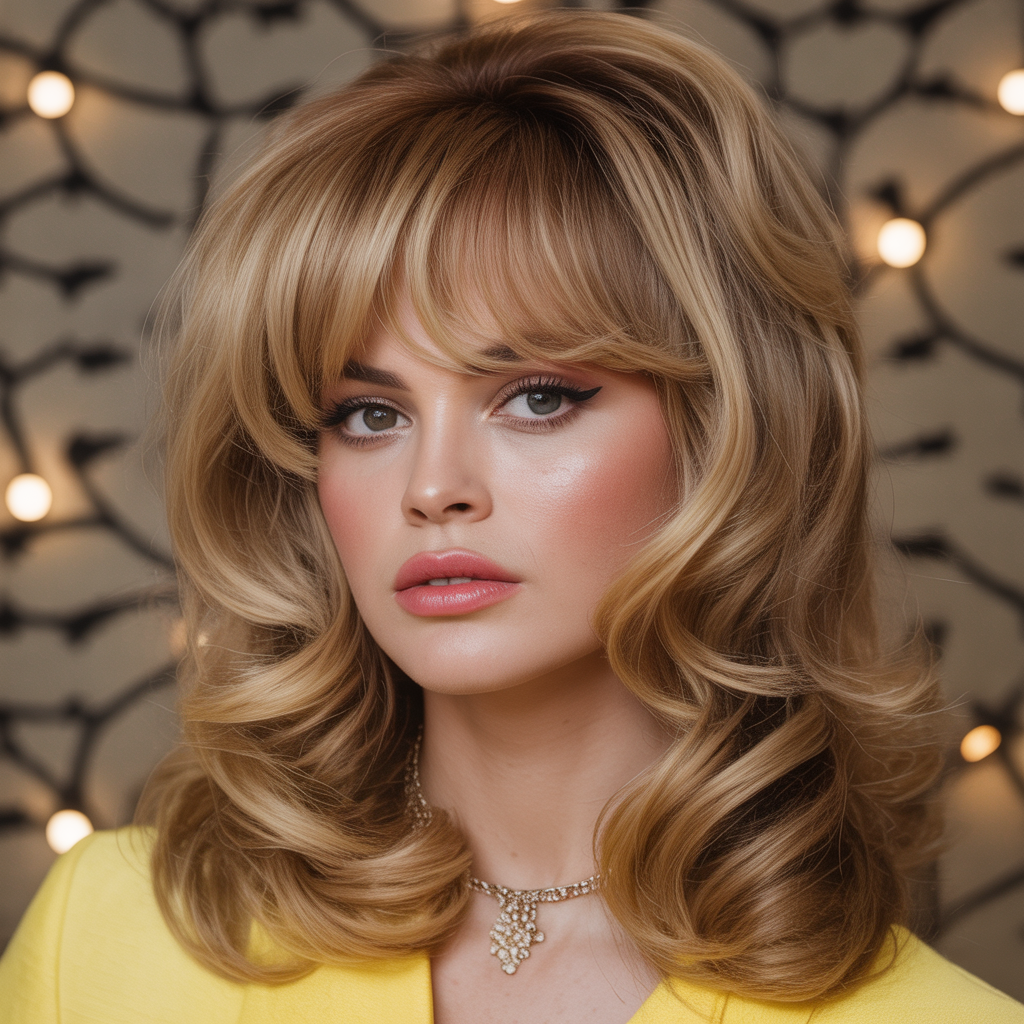
Inspired by Brigitte Bardot, these bangs are full, voluminous, and slightly parted in the center. They ooze vintage glamour while remaining modern and wearable. They pair beautifully with wavy or tousled styles.
Styling tip: Add volume at the roots with a round brush to mimic the signature Bardot look.
Shaggy Bangs
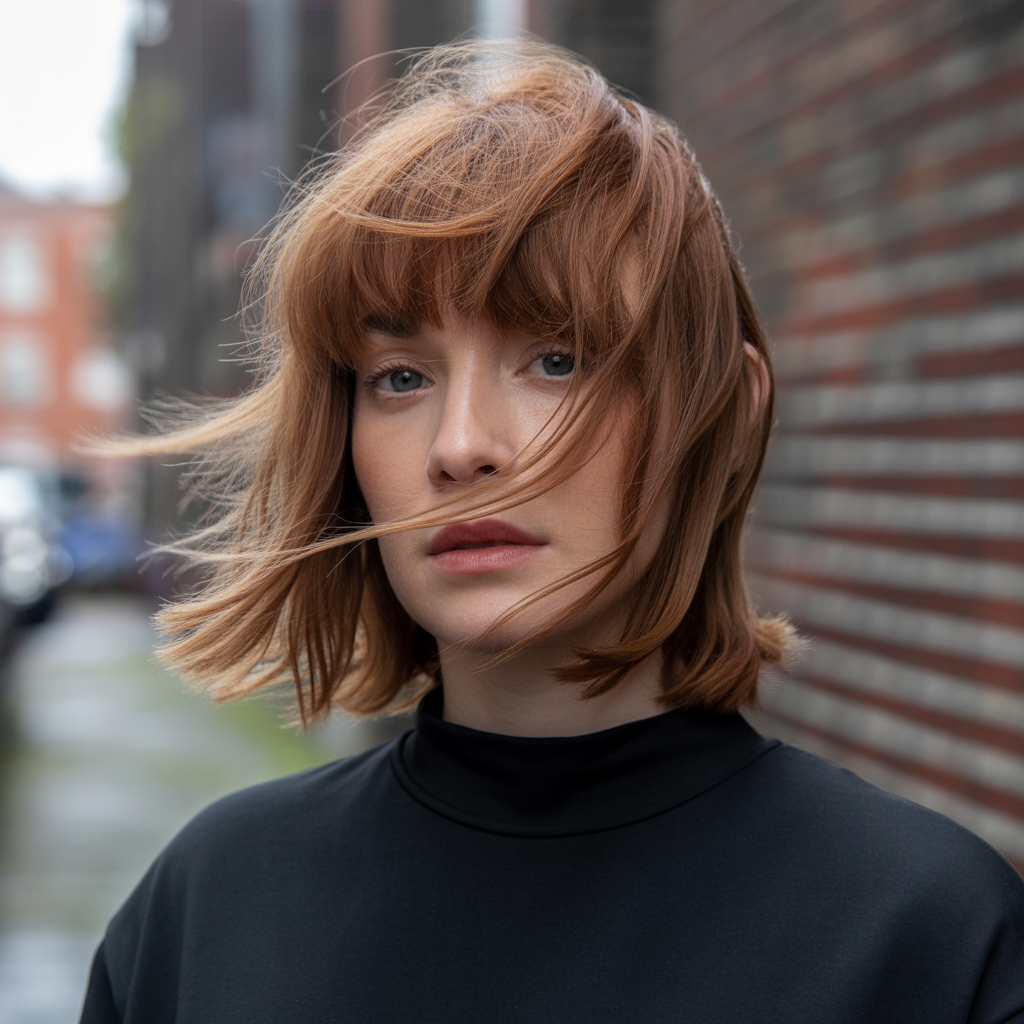
Shaggy bangs are part of the popular shag haircut, full of layers, movement, and texture. They give a rock-and-roll vibe and work with most hair types, especially medium to thick.
Styling tip: Pair with a layered shag haircut and use a lightweight mousse for volume.
Swoop Bangs
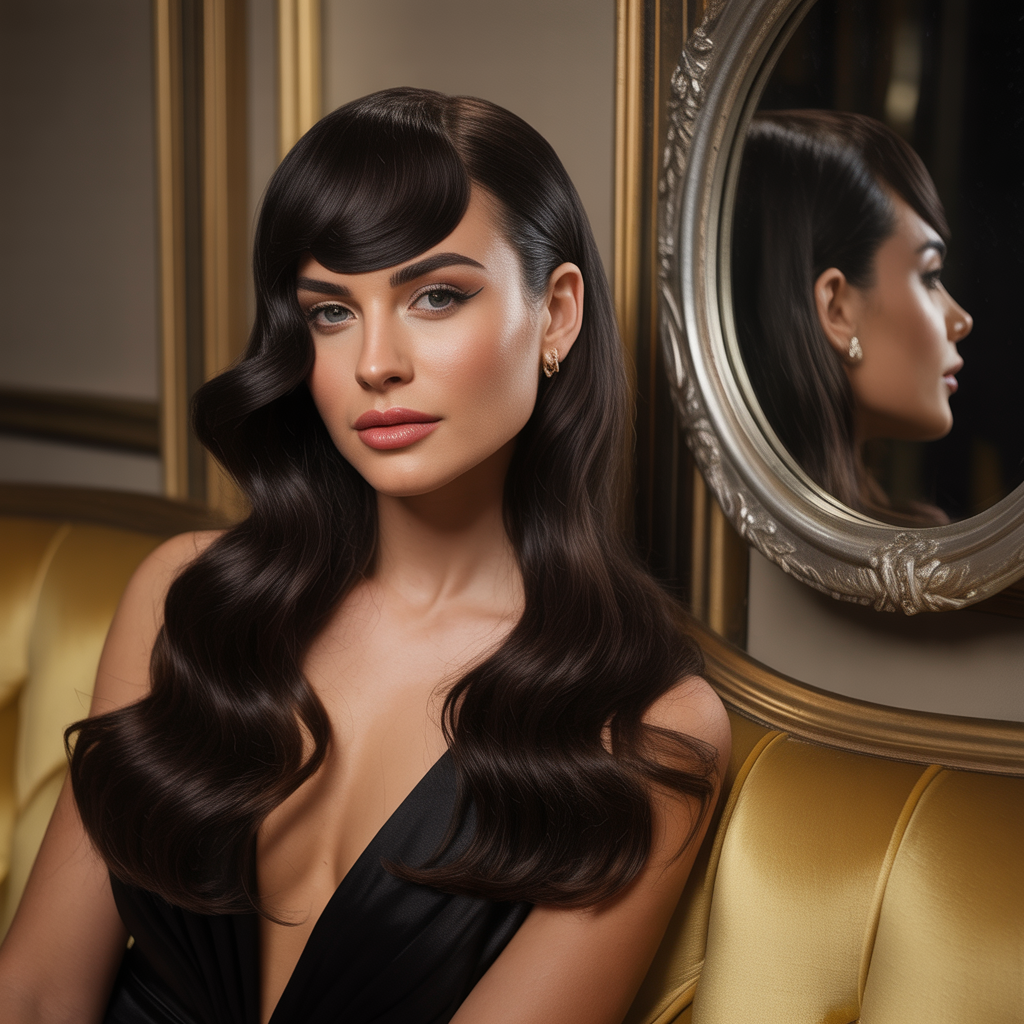
Swoop bangs are dramatic, long, and curved, creating an elegant sweeping motion across the forehead. They’re perfect for formal styles or adding softness to sharp jawlines.
Styling tip: Blow dry with a large round brush to create the swooping arc.
Asymmetrical Bangs

Asymmetrical bangs are cut at an angle, longer on one side than the other. They’re edgy, artistic, and perfect for those who like to stand out. This style works best with straight or slightly wavy hair for a visible contrast.
Styling tip: Flat iron the bangs for a sleek, defined angle.
Choosing the Right Bangs for Your Face Shape
When selecting from different types of bangs, it’s essential to consider your face shape:
- Round face: Side-swept or curtain bangs elongate and slim.
- Oval face: Almost any style works — try blunt, choppy, or Bardot bangs.
- Square face: Wispy or textured bangs soften strong angles.
- Heart-shaped face: Long, side-swept bangs balance a wider forehead.
Maintenance and Styling Tips for Bangs
No matter which type you choose, bangs require a bit of upkeep to look their best:
- Trimming: Most styles need a touch-up every 3–5 weeks.
- Styling tools: Round brushes, flat irons, and texturizing sprays can help achieve the desired finish.
- Oil control: Bangs can get oily faster — use a dry shampoo to keep them fresh.
- Heat protection: Always apply a heat protectant before styling to prevent damage.
Frequently Asked Questions
1. What are the easiest bangs to maintain?
Curtain bangs are among the easiest to maintain because they grow out gracefully and don’t require constant trims.
2. Can I cut my bangs at home?
While it’s possible, it’s best to visit a stylist to ensure the correct length, angle, and texture. DIY cuts can result in uneven lines.
3. Do bangs work for curly hair?
Yes! Curly bangs are trendy and work beautifully with natural textures, as long as they’re cut by a stylist experienced with curls.
4. How do I prevent my bangs from getting greasy?
Wash your bangs separately between full washes or use dry shampoo to absorb oil and maintain volume.
5. Which bangs make you look younger?
Soft, wispy, or curtain bangs can create a youthful appearance by softening facial features and framing the eyes.
Final Thoughts
Bangs have the power to redefine your look without requiring a complete hairstyle overhaul. From bold and blunt to soft and wispy, the right fringe can enhance your features, complement your face shape, and match your personal style. The beauty of bangs lies in their versatility — you can experiment with length, texture, and styling techniques until you find your perfect match.
So, whether you’re going for a subtle face-framing touch or a daring statement fringe, these 15 types of bangs offer endless inspiration for your next salon visit.







